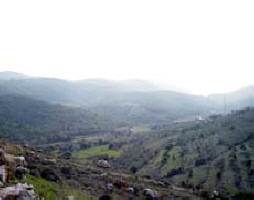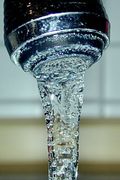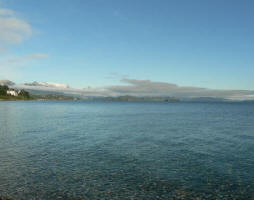 Melting glaciers pose threat to water supply
Melting glaciers pose threat to water supply
The melting of small glaciers around the world will wreak havoc with the water supply for various towns in valleys nourished by the rivers that flow down from surrounding mountains, a new international study predicts. Scientists estimate that freshwater fauna is at risk from the retreating ice. The findings, published in the journal Nature Climate Change, shed fresh light on the impact of global thawing on biodiversity in watercourses, something that has never before been measured.
Scientists led by the Institut de recherche pour le développement (IRD) in France and the University of Copenhagen in Denmark focused their work on investigating what the future holds for populations in streams formed by meltwater in the Alps, Alaska and the equatorial Andes. The group from the IRD has been working in the Andes, where they collected samples from around 50 different sites in paramos (i.e. alpine tundra ecosystems).
Past studies analysed the population of macroinvertebrates, such as Ephemeroptera, Trichoptera and Diptera, which live for the most part at the base of glacial torrents. Because information about their environmental needs is readily available, researchers use the related data as a model for their work.
In this study, the scientists probed the reaction of three key elements to the changes in glacial coverage in the temperate, arctic and tropical areas: the local or regional taxonomic diversity (i.e. how many species are present in a stream or across a hydrographic network, respectively); and the variation in this diversity between watercourses.
The researchers noted, after assessing the different distances from glaciers, a rise in local diversity when it moves further downstream. The populations found in the various streams at the same altitude appear to be very consistent; the populations found in two streams that seem to be the same, within a 100-metre distance, can vary extensively based on the glacier from which they drain. For example, the study showed that the Andean glaciers melt slowly or quickly depending on their size.
Aquatic population data generated in this study, along with data from studies from the 1990s, indicate that various species start to disappear when the glacial coverage is reduced where it covers between 30 % to 50 % of the drainage basin. A complete melting of the glaciers could wipe out between 11 % and 38 % of the regional diversity.
Native species, meanwhile, have been compelled to adapt in extraordinary ways because of the pressures various elements, such as low temperatures, atmospheric pressure, intense solar rays, irregular rainfall and searing winds, place on them.
According to the researchers, their findings reveal the key role glaciers play in the creation and dynamism of biodiversity. The disappearance of species would trigger a huge loss of the services they offer.
Experts from Ecuador, France, the United Kingdom and the United States contributed to this study.
For more information, please visit:
Institut de recherche pour le développement (IRD):
http://www.ird.fr/
University of Copenhagen:
http://www.ku.dk/english/
Nature Climate Change:
http://www.nature.com/nclimate/index.html
Category: Miscellaneous
Data Source Provider: Nature Climate Change; Institut de recherche pour le développement (IRD):
Document Reference: Jacobsen, D. et al., 'Biodiversity under threat in glacier-fed river systems', Nature Climate Change, 2012, doi:10.1038/nclimate1435
Subject Index: Climate change & Carbon cycle research; Coordination, Cooperation; Environmental Protection; Scientific Research; Sustainable development
| Contact information | n/a |
|---|---|
| News type | CallForPaper |
| File link |
http://cordis.europa.eu/fetch?CALLER=EN_NEWS&ACTION=D&SESSION=&RCN=34698&dm_i=GLX,UKBH,65Y17U,2IGDW,1 |
| Source of information | CORDIS |
| Keyword(s) | water supply, Melting glaciers |
| Subject(s) | DRINKING WATER , HYDRAULICS - HYDROLOGY , NATURAL MEDIUM , RISKS AND CLIMATOLOGY |
| Relation | http://www.ird.fr/ |
| Geographical coverage | Ecuador, France,United Kingdom,United States, |
| News date | 19/06/2012 |
| Working language(s) | ENGLISH |
 you are not logged in
you are not logged in





